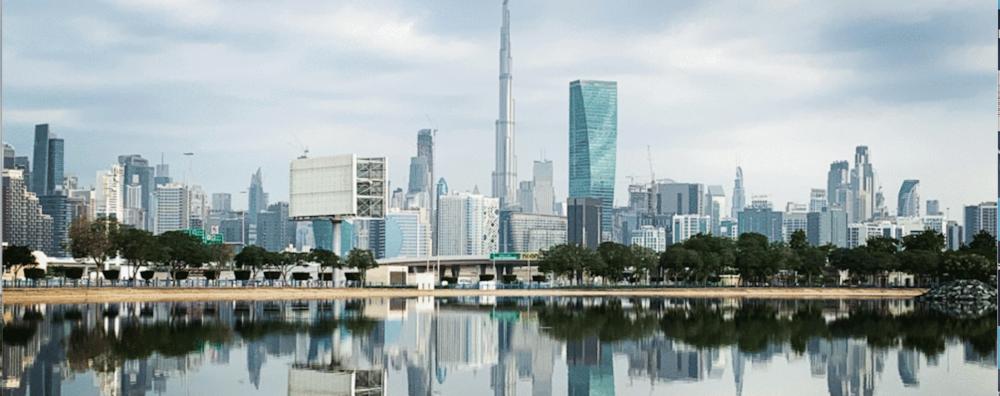I’ve posted before about turning the desert green and, despite not having green fingers myself, it’s been a real joy watching our garden grow over the past three years.

One of my favourite plants: our eye-popping bougainvillea
And grow it did, from humble sandpit beginnings into a fully-hedged, little oasis of green – helped by an automatic irrigation system that turns sprinklers on twice a day (“rain”, as the children hopefully call it) and drips water onto the thirsty flower beds.
As well as a real grassy lawn and some hardy plants, the other thing that completed our sand lot’s transformation into a lush garden was a wall of trees along the back boundary.
“We’ll plant ten trees,” the landscapers told us (omitting to tell us that they’d position the saplings less than ten inches apart).
“Very fast-growing trees. Very green,” he said, making bushy shapes with his hands.
The tree he was referring to is native to the Arabian Peninsula, has been planted (inexpensively) in communities all over Dubai, and does indeed shoot up to the sky rather like Jack’s beanstalk.
Called Damas trees, they can grow up to 15 metres high and in our garden certainly provided a lot of green foliage, as well as attracting birds and salamanders.

Hedge fund: Our unstoppable, leafy Damas trees, heading upwards at a rapid rate
We weren’t aware of the huge problems these trees can cause until they hit the media a little while ago – and killed my friend’s lawn (right behind us) due to totally blocking out the sun.
The Damas root system, it turns out, is so aggressive in seeking out water and nutrients that it can strangle underground pipes, crack walls, choke drains and stop other plants from growing.
You only have to do a quick search on Google to read headlines such as “A Damas tree ate my house” and to find out that a “Protect your home from Damas tree disaster campaign” was launched recently by a community management company.
Worried, I dug deeper online and on an expat forum read about a villa with 60 Damas trees that had “grown under the ground, around the pool, under our house foundations and are trying to come up in our central hallway,” cracking tiles.
Another post described how Damas roots had infiltrated their downstairs bathroom: “One day, I opened the cupboard under the sink to get some new toothbrushes out for the kids and found a lovely tree inside. The roots were also growing under the bath and had completely cracked the tub,” the post read.
Is it just me, or does this all sound like The Day of the Triffids to you?
I asked our gardeners, the very same people who landscaped our garden with the trees in the first place. “Yes, very bad,” they nodded – and it was agreed they’d topple half of them and prune the rest.
I’m pleased to say, the job is now done. Our Damas trees have been thwarted (for the time being), our neighbour’s lawn can see the light of day, and – after the gardeners went completely nuts with the saw – we’re left with…
Five lollipops!

Rasputin trees: You can’t simply lop the tree off above the ground as it just grows back, leading people to take extreme measures. One person I heard about chopped a Damas tree down, drilled a big hole in the middle of the trunk, poured petrol down and burnt the stump!

On a prettier note, you’d be amazed at the flora and fauna that grows in Dubai, creating explosions of colour in our desert garden
PS: Think your friends might like this too? I'd love you to share it. Thanks – you rock!
Like this:
Like Loading...










